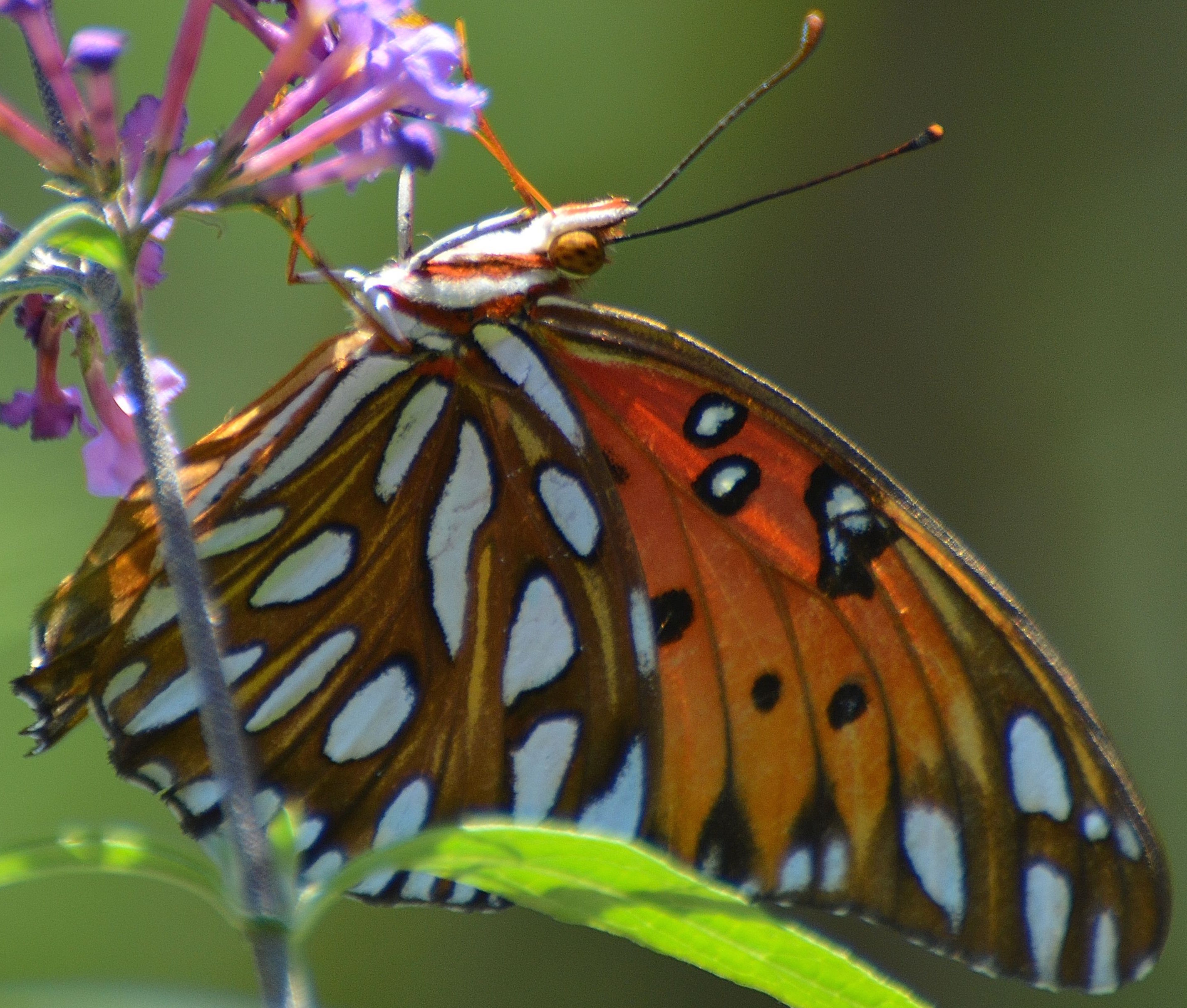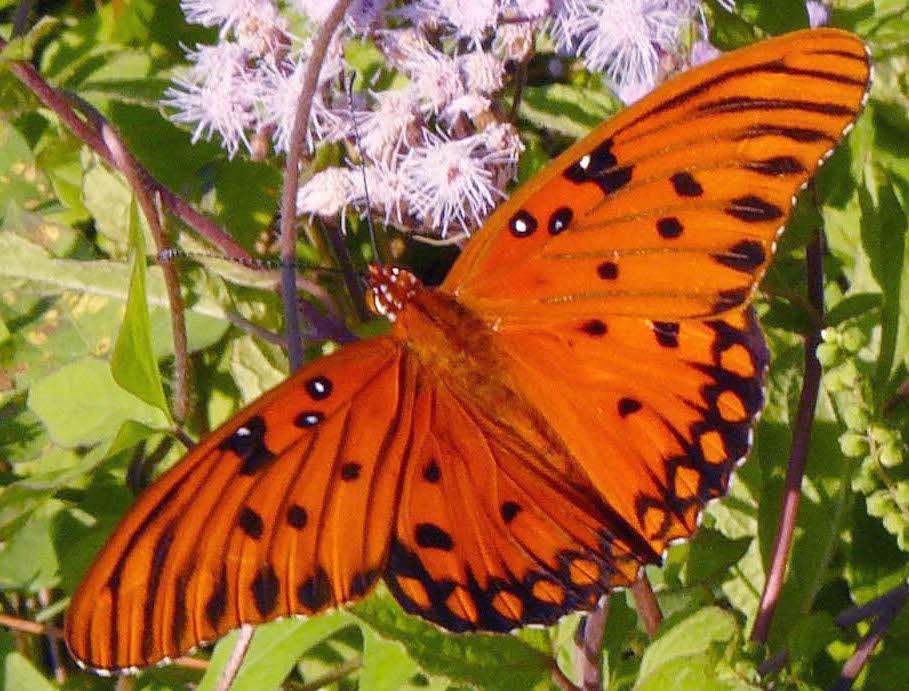|
| Common Name | Gulf Fritillary by Randy Newman => Fort Macon State Park, 2003-09-12
[View PDF]
 Click to enlarge Click to enlarge
[Google Images] GBIF [Global Distribution ] BoA [Images ] iNaturalist |
| Scientific Name | Dione incarnata
|
| Link to BAMONA species account. |
| Map | Click on a county for list of all database records for the species in that county.
 |
| Distribution | DISTRIBUTION: This partial migrant species has an unusual distribution in the state. It occurs mainly along the southern coast and in the southern Mountains and adjacent Piedmont. There are scattered records over nearly all of the state, but with few records for the northern Mountains (though records for all counties) and very few for the northern Coastal Plain, where not an artifact of field work.
|
| Abundance | ABUNDANCE: Usually common (to at times abundant) in late summer and fall in the extreme southeast (where it is at least partially resident), but mostly uncommon to fairly common along the coast north to Carteret County, and rare farther north along coast, at least to Cape Hatteras. Generally uncommon in the southern Mountains and southwestern Piedmont; rare to uncommon elsewhere -- increasing in recent years in most parts of the state. Still very few records for the northern Coastal Plain, where it is very rare. Erratic in numbers from year to year, as this is mostly a migrant species (except near the coast); can be at times uncommon to fairly common in much of the Piedmont in "good" years.
|
| Flight | FLIGHT PERIOD: Generally the late summer and fall seasons. Records scattered all year; however, it is scarce before mid-July and after early December. Mainly a migrant to the Piedmont and Mountains, but definitely a resident in the southeastern Coastal Plain. There are perhaps as many as three broods in the state. The flight charts show small numbers in spring and early summer; and larger numbers after mid-July, which probably refer to two run-on broods. It isn't clear if most of the individuals before mid-July are migrants from farther south or west; for example, it seems unlikely that adults seen in the Mountains in spring could have come from eggs laid in NC in the previous fall.
|
| Habitat | HABITAT: Various open country places, typical of most migrants -- dunes, fields, gardens, thickets, woodland edges.
|
| Plants | FOOD AND NECTAR PLANTS: Foodplants are Maypops (Passiflora incarnata) and other passionflowers (Passiflora spp.). Nectar plants are very varied, and may include exotic garden species. Large numbers may be seen nectaring on Lantana (Lantana strigocamara) and Groundsel-tree (Baccharis halimifolia) along the southern coast in the fall.
|
| Comments | COMMENTS: Of the southern migrants into NC, this is one that can be seen annually along our southern coast. Surprisingly, the species is more likely to be seen in Asheville than it is in Fayetteville or Raleigh, as there seems to be a northbound or eastbound migration into the southwestern corner of the state. Interestingly, there is little inland "push" of migrants into the Coastal Plain from the immediate coast.
Gulf Fritillaries had banner years in 2002, 2003, 2008, 2012, and 2019. A remarkable ten counties had first records in 2002, six more counties had first records in 2008, and four more in 2012. Several counts of 200+ came from Bald Head Island in 2019. The species, however, continues to be surprisingly scarce in the Sandhills, though found in all of these counties.
The scientific name was changed from Dione vanillae to Dione incarnata in early 2022.
|
State Rank | S4 | | State Status | |
Global Rank | G5 | | Federal Status | |
| Synonym | Dione vanillae, Agraulis vanillae
|
| Other Name |
|
|
|

 >>
>>




